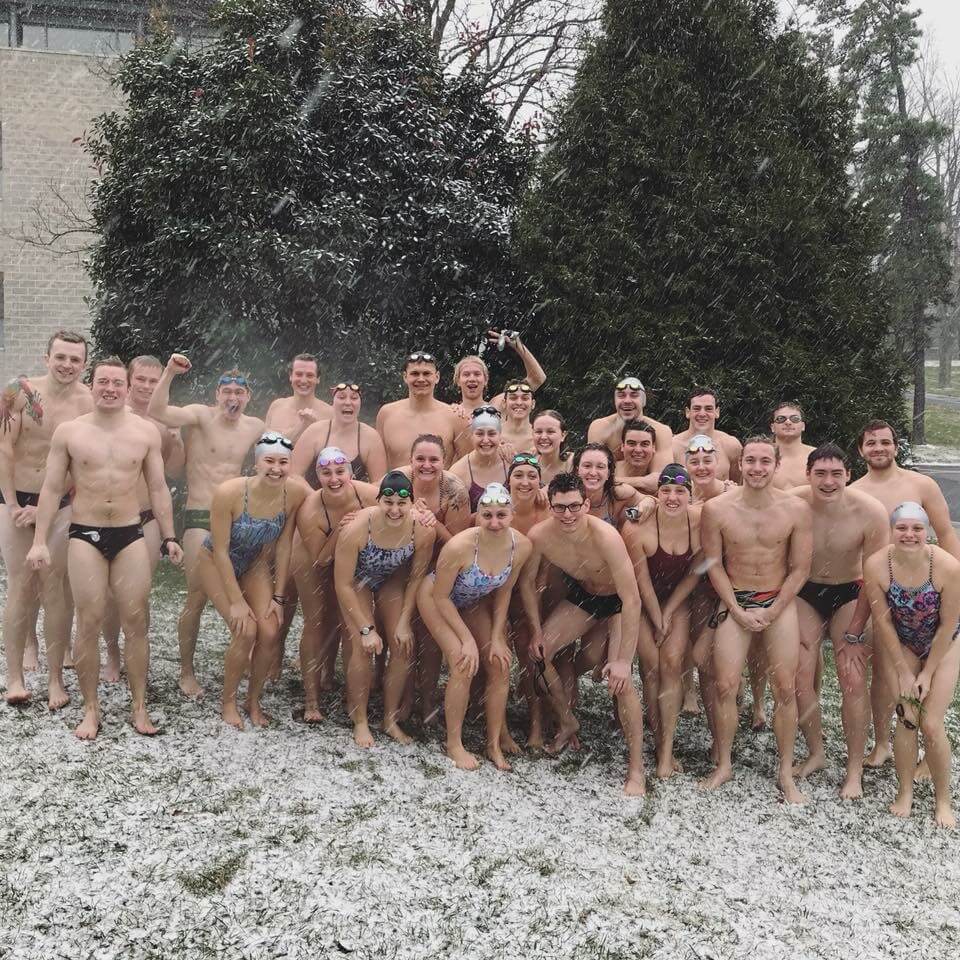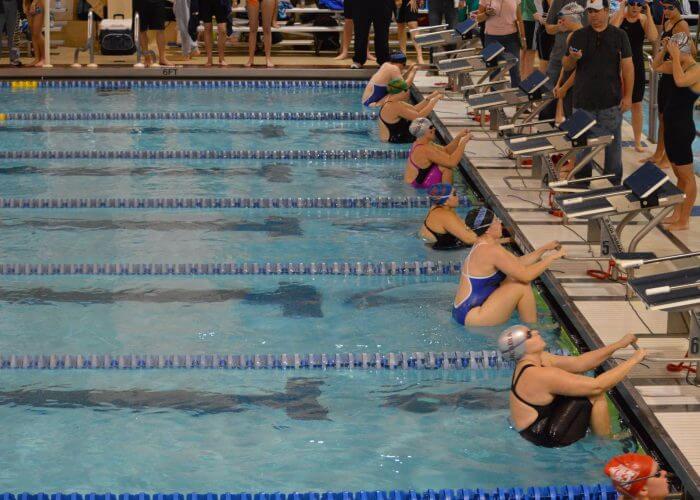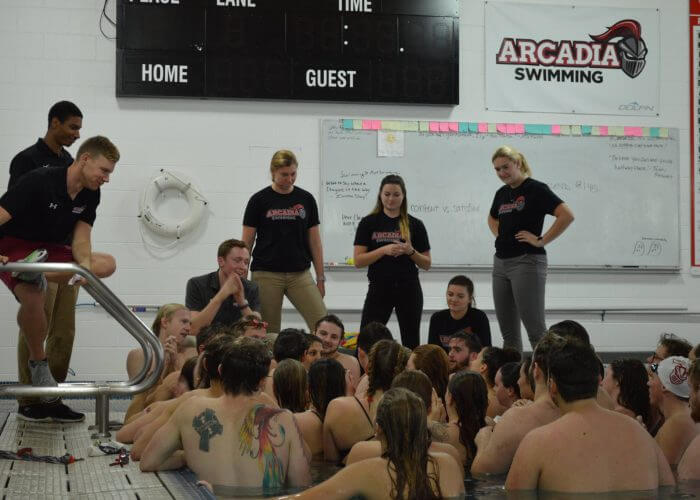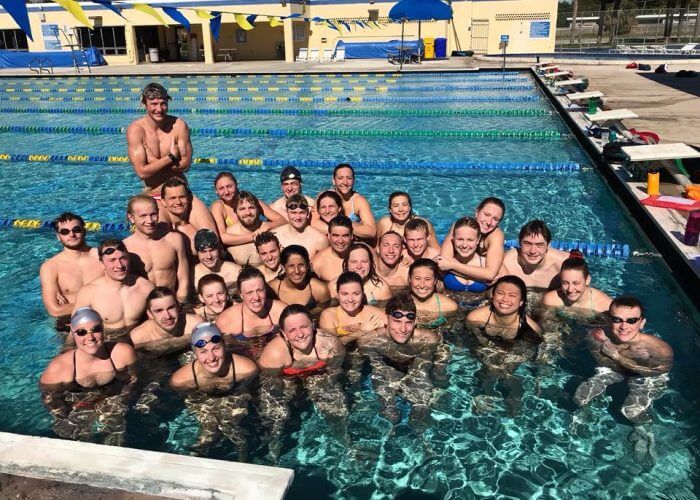Winter Training: Why Is It So Intense?

By Taylor Byers, Swimming World College Intern.
Winter training is a famous one or two weeks during the swim season that every swimmer either dreads or looks forward to. One positive is that there is a break from school, so swimmers have more time to relax and spend time with family and friends. However, for most teams, winter training involves a step up in yardage and intensity. While this is a common occurrence in most swim seasons, one might take a step back to ask: “Why exactly is winter training more difficult than the rest of the season?” Here are five explanations.
Coming off of a mid-season meet

Photo Courtesy: Lori Beckemeyer
A lot of teams have mid-season meets that they rest and taper for to see how fast they can go with the training they have done thus far. It is a good gauge for coaches to see what they still need to work on during the second half of the season. Since there is still more of the season left and swimmers went down in yardage, they have to get back up to the yardage they were at prior to tapering.
Increasing intensity and yardage during winter training will allow swimmers to get right back to, or get way ahead of, the training level they were at before resting for the mid-season meet. Even if they are not coming off of a mid-season meet, swimmers use this training period to push to the next level in order to meet their end-of-season goals.
Having extra time

Photo Courtesy: Pexels
Having a break in school allows swimmers to focus solely on the training and increased yardage and intensity. Less time management needs to be done since balancing homework and studying along with training is not necessary during this time. This helps the athletes have a more concentrated focus and more time to process and handle the rigor of the workload during winter training in a different way.
Championship meets in focus

Photo Courtesy: Lori Beckemeyer
Head Swim Coach of Arcadia University, Nate Parsley, starts planning winter training at the beginning stages of his yearly program plan with Arcadia’s conference meet in mind:
“Whenever you program plan, you always want to take into consideration two primary factors: yardage and intensity. Ideally, by the time we get to winter training, we want to try to peak in both of these areas in preparation for conference championships, which – by the end of winter training – is just a short five weeks away.”
Parsley starts his training by re-establishing the general base that was formed during the first half of the season, since the team has been apart for over two weeks. Then he works on an almost simultaneous ascent toward peak yardage and intensity, also known as the “overload” phase of the season. This ascent looks different for each training group (sprint, middle distance, and distance). Parsley mentions, “I think that it is important to strike a balance between ‘overload’ while also keeping an eye on quality yardage (not just swimming mindless yards to swim yards).”
Increased mental toughness

Photo Courtesy: Matt Rubel of Rubel Photography
There are other ways aside from the physiological rationale that swimmers benefit from winter training. Parsley believes that the intensity is a wonderful tool to cultivate mental toughness. Swimmers have their chin held higher standing behind the blocks after completing a brutal week. Knowing intense training is under your belt is a way to increase confidence of the mental state of swimmers.
Team bonding

Photo Courtesy: Taylor Byers
Another benefit of winter training for swimmers is being able to bond more closely with the team. Many teams incorporate team bonding into the winter training schedule as well. This may include going to a new destination, such as tropical regions, or having dinners and get-togethers to get their minds off of the rigorous training. Spending time as a team away from pool helps integrate the team in different ways.
Whenever you are swimming lap after lap during this winter training season, remember that your coach is not crazy; there is a specific science for every set they throw your way. Keep your end-of-season goals in mind and have fun with it. Winter training is a great time to test your limits and push past the comfort zone while maximizing full recovery each day. Are you ready to take on the challenge?
All commentaries are the opinion of the author and do not necessarily reflect the views of Swimming World Magazine nor its staff.




Wail Chouiha